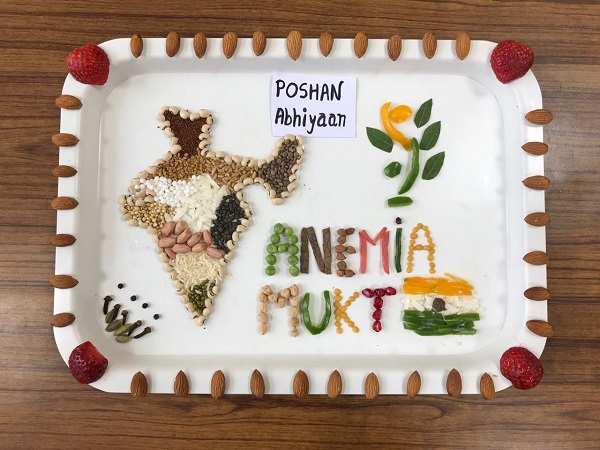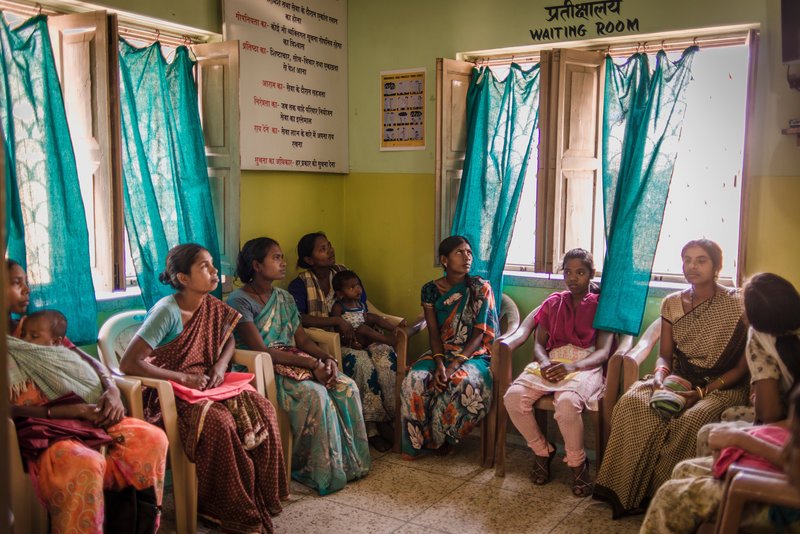Anaemia is a health a condition in which the count of red blood cells or the haemoglobin concentration within them is lower than normal. In India, an overwhelming number of women and children are anaemic. The anaemia levels in the country have consistently remained high even in the post-independence period, following the green revolution and its consequential change in diet patterns.
Dr Sunil Raina, head of community medicine at Dr Rajendra Prasad Government Medical College, Himachal Pradesh says, “Therefore, a deeper research is needed. There could be genetic or environmental factors, but such a study has never been conducted.”
In the first Phase of the National Family Health Survey (NHFS) 2019-20 which was released early this year it is cited that in most states and Union Territories, more than half the children and women have been found anaemic. These statistics highlight the urgent need to address, analyse and combat this health crisis.
:max_bytes(150000):strip_icc()/anemia-after-surgery-3156852-Final-63c258f51d7846e1b24d870a3b8ea88c.png)
Anaemia: Causes, nature and manifestations
According to the World Health Organisation (WHO), anaemia is a condition in which “the number of red blood cells or the haemoglobin concentration within them is lower than normal”. Haemoglobin is necessary for carrying oxygen to the cells. A lesser amount of haemoglobin will result in the reduction of oxygen supply to the body’s tissues.
This manifests various symptoms such as fatigue, weakness, dizziness and shortness of breath, chest pain, cold hands and feet. Other symptoms involve recording low blood pressure and sometimes even experiencing cravings for inedible things. Anaemia can be temporary or persist for a longer term.
There are five types of anaemia – Aplastic, Iron Deficiency, Sickle Cell, Thalassemia and Vitamin Deficiency. Iron deficiency anaemia is among the most common anaemia. The causes of anaemia include internal bleeding, menstruation, malnutrition, iron deficient diet and nutrition deficiency.
Anaemia weakens immunity in all age groups and also impacts the ability for physical work. Even though anaemia affects everyone, the most affected are women. The reason for women being the most affected by iron deficiency more than men is because of the loss of iron during menstruation. Adolescent girls are also at a high risk of being anaemic

Anaemia weakens immunity in all age groups and also impacts the ability for physical work. Even though anaemia affects everyone, the most affected are women. The reason for women being the most affected by iron deficiency more than men is because of the loss of iron during menstruation. Adolescent girls are also at a high risk of being anaemic.
There are physical, psychological and behavioural changes that take place when a person is anaemic. There is an increased need for iron in the body, and this requirement is more in pregnant, as well as breastfeeding women. Thus, they are a group that is most prone to anaemia. It also results in deaths of mothers during birth.
Anaemia and Indian women
The most prominent reason for anaemia in Indian women is cited to be the lack of millets in diet. There is also an overdependence on wheat and rice, and a lack of sufficient consumption of green leafy vegetables. An increase in consumption of packaged and processed foods which have lower nutrition value is also a major cause for anaemia in India.
The effect of anaemia is not uniform in everyone. Various factors determine how an individual will be affected by anaemia in our country. A study by Anu Rammohan and Niyi Awofeso, in 2011 highlights how class, caste, and religion intersect in determining the incidence of iron deficiency in women.
The study highlights that food-insecure states, poverty and marginalisation on the basis of caste result in increased prevalence of anaemia. Individuals from the poorest, more oppressed groups suffer a higher percentage of moderate to severe anaemia, compared to those belonging to wealthier, privileged social groups.

A similar pattern was observed in the case of caste were the oppressed caste/ tribes have a higher incidence of anaemia. The paper highlights how the low economic status of these groups restricts them from buying nutritious food. Another factor that the paper has focused upon is vegetarian diet.
Social factors also make women more vulnerable to anaemia. Women are discriminated against from birth due to the patriarchal nature of our society. This results in them not receiving adequate nutrition from childhood due to gendered preferences in households towards male children. There is a difference in food allocation and consumption. Women are expected to eat last, be fine with getting less and not getting access to a rich diet of their choice
Vegetarian women are more at risk of having iron deficiency compared to women who consume meat. If a woman belongs to a marginalised class and is a vegetarian, it makes her more vulnerable because she may not have access to food items within her choice range that are more nutritious and less affordable.

Social factors also make women more vulnerable to anaemia. Women are discriminated against from birth due to the patriarchal nature of our society. This results in them not receiving adequate nutrition from childhood due to gendered preferences in households towards male children. There is a difference in food allocation and consumption. Women are expected to eat last, be fine with getting less and not getting access to a rich diet of their choice.
Also read: Lockdown’s Adverse Impacts On Women’s Health In Gurugram’s Slums
The lack of awareness about the health risks of anaemia also has an impact on women’s health since they are not equipped to make decisions about their health. The consequence of anaemia not only affects the individual but also the next generation. Pregnant women are vulnerable and this in turn also affects the birth weight of babies and triggers different neonatal illnesses.
Addressing and tackling anaemia: The way ahead
Over the years, various steps were taken to tackle anaemia by different governments. The National Anaemia Prophylaxis Programme was launched in1970 with an aim to distribute Iron and Folic Acid (IFA) tablets to pregnant women, and children under the age of five.
The implementation was not as effective due to the inadequate supply of IFA tablets and also a disparity in the distribution. In the year 1991, the National Nutritional Anaemia Control Programme was made part of the National Child Survival and Safe Motherhood Programme. In 2013, the Weekly Iron and Folic Acid Supplementation (WIFAS) programme was introduced.
The existing health and nutrition intervention programmes should overcome their limitation and make sure that there is an adequate distribution of the supplements. There is should be more political commitment and anaemia should be considered as a serious problem
Addressing the limitation of the previous programmes, the Anaemia Mukt Bharat campaign was introduced more recently, to reduce anaemia prevalence by three percentage points per year among children, adolescents and women of reproductive age between 2018-2022. The initiatives under this campaign include the testing and treatment of anaemia using digital methods, as well as extensive awareness drives.

India still has a long way to tackling anaemia. Nutrition and comprehensive health strategies are crucial, but alongside, improving education can also help in reducing anaemia in India. It has been observed that women’s education and access to more resources on anaemia has helped in the fall of anaemia among children by 10 per cent and 24 per cent in pregnant women.
The existing health and nutrition intervention programmes should overcome their limitation and make sure that there is an adequate distribution of the supplements. There is should be more political commitment and anaemia should be considered as a serious problem.
Measures to enhance dietary intake are also very important in this context. Awareness programs play a major role here. If women are aware of the symptoms they can get themselves tested, and get more benefit from the allied anaemia resistance initiatives. The Women and Child Development Department has also started the ‘Anemia Campaign 12’, which aims to create awareness about low haemoglobin levels.
Anaemia is a serious health issue that needs to be addressed. Women and children are already vulnerable groups and exposing them to this kind of health risk will prove detrimental to their overall well being and quality of life.
Also read: Why Are Unmarried Women Stigmatised While Accessing Sexual Health Services?
About the author(s)
Geeta Gunjal is a fresh graduate from Symbiosis School for Liberal Arts, Pune. She majored in International Relations. She likes to read books and binge-watch K-dramas. She is trying to learn more about Intersectional feminism




